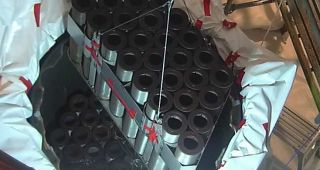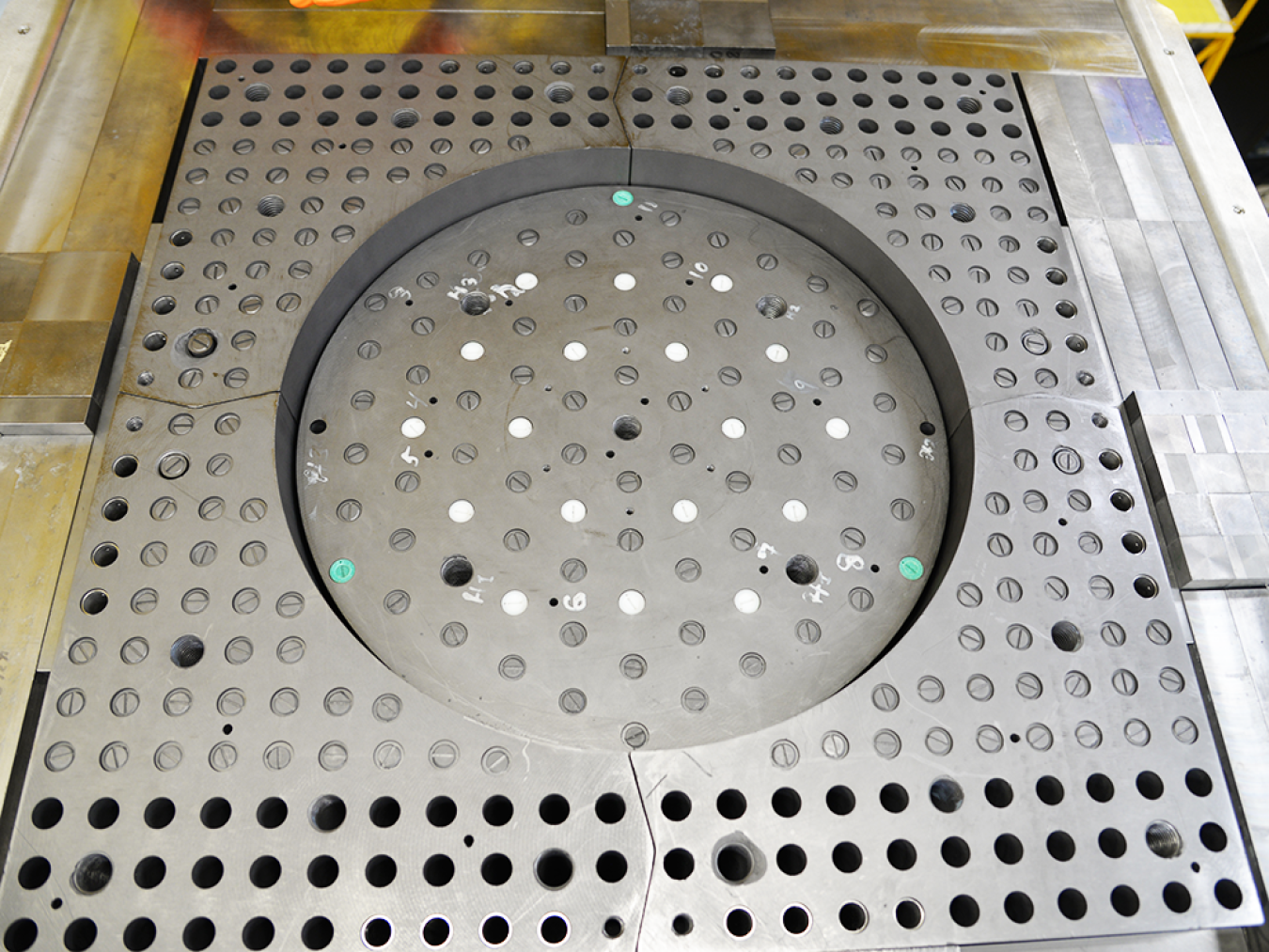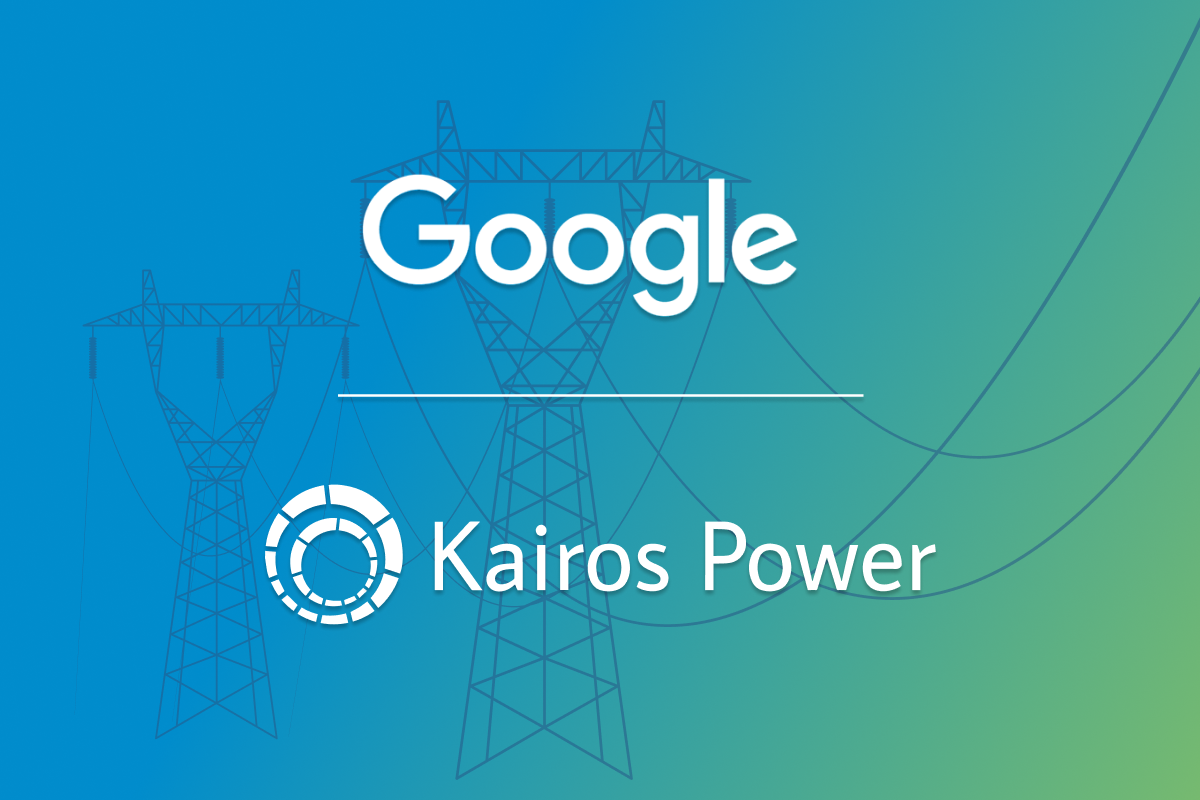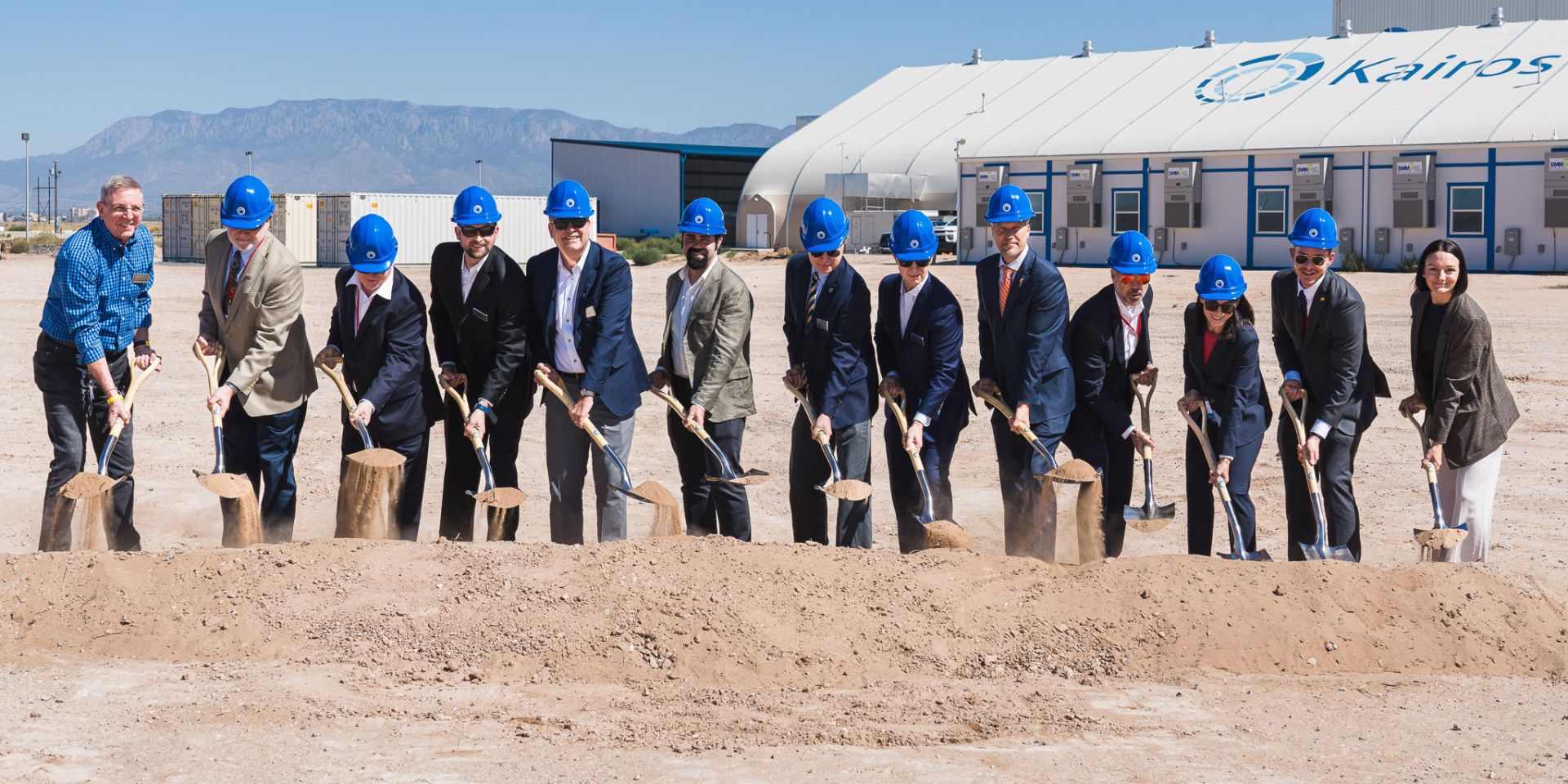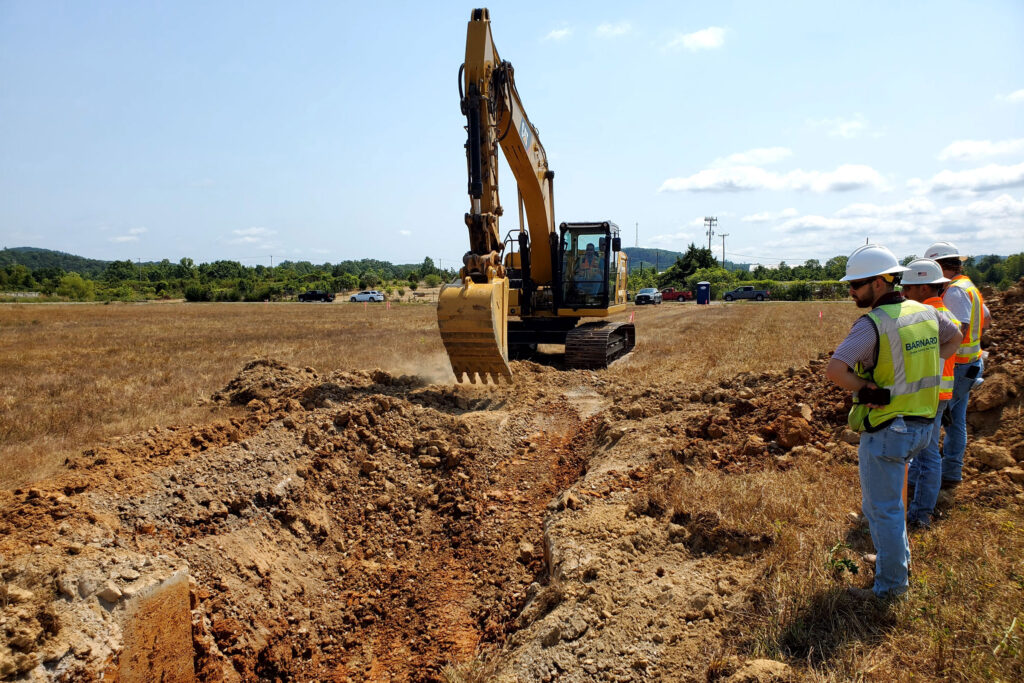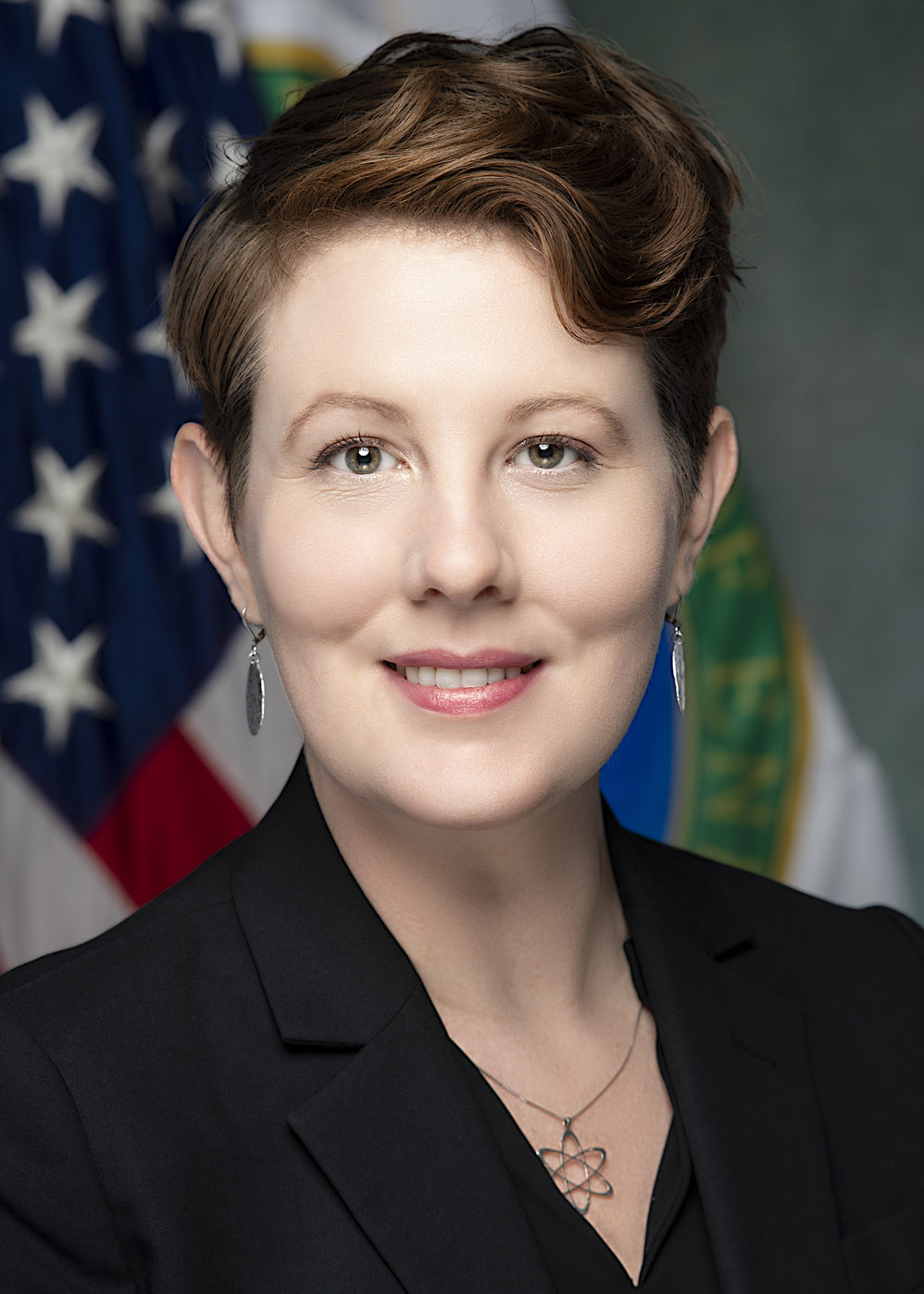Deep Isolation’s Universal Canister System. (Photo: Deep Isolation)
Nuclear waste disposal technology company Deep Isolation announced it has successfully completed Project PUCK, a government-funded initiative to demonstrate the feasibility and potential commercial readiness of its Universal Canister System (UCS) to manage TRISO spent nuclear fuel.
Drilling begins. (Photo: Kairos Power)
Kairos Power announced this morning that safety-related nuclear construction has begun at the Oak Ridge, Tenn., site where the company is building its Hermes low-power test reactor. Hermes, a scaled demonstration of Kairos Power’s fluoride salt–cooled, high-temperature reactor technology, became the first non–light water reactor to receive a construction permit from the Nuclear Regulatory Commission in December 2023. The company broke ground at the site in July 2024.
This Deimos core configuration shows the fuel, stainless steel, polyethylene, and borated polyethylene positioned for the THETA project. (Photo: DOE)
Los Alamos National Laboratory recently performed a series of customized criticality experiments to obtain data that will support the transportation of HALEU TRISO fuel, the Department of Energy announced April 21.
Participants celebrate Texas A&M’s announcement about hosting SMR units from four nuclear companies. (Photo: Texas A&M)
Texas A&M chancellor John Sharp has announced that the university could soon become a home to small modular reactors from four advanced nuclear companies: Kairos Power, Natura Resources, Terrestrial Energy, and Aalo Atomics.
Concept art for a Hermes plant. (Image: Kairos Power)
The Nuclear Regulatory Commission announced yesterday that it has directed staff to issue construction permits to Kairos Power for the company's proposed Hermes 2 nonpower test reactor facility to be built at the Heritage Center Industrial Park in Oak Ridge, Tenn. The permits authorize Kairos to build a facility with two 35-MWt test reactors that would use molten salt to cool the reactor cores.
Kairos Power leaders, elected officials, and key partners break ground on the Salt Production Facility at the company’s Manufacturing Development Campus in Mesa del Sol, N.M. (Photo: Kairos Power)
Kairos Power broke ground yesterday on a Salt Production Facility at the company’s newly dedicated Manufacturing Development Campus during an event at a sprawling site in Mesa del Sol, N.M., just south of Albuquerque. The new facility will produce the FLiBe (a mixture of lithium fluoride and beryllium fluoride salts) needed to cool the advanced reactors Kairos Power plans to build, starting with its Hermes nonpower demonstration reactor in Oak Ridge, Tenn., and could be operational and producing salt in 2026, according to an October 3 Department of Energy news release.
Workers begin construction at the Hermes site in Oak Ridge, Tenn. (Photo: Kairos Power)
Earlier today, on a site in Oak Ridge, Tenn., that was formerly home to the K-33 Gaseous Diffusion Plant, Kairos Power marked the start of construction on its low-power demonstration reactor. Named Hermes, the 35-MWt test reactor claims status as the first Gen IV reactor to be approved for construction by the Nuclear Regulatory Commission and the first non–light water reactor to be permitted in the United States in more than 50 years.
The former site of the K-33 gaseous diffusion enrichment plant in Oak Ridge’s East Tennessee Technology Park is the future site of Hermes and Hermes 2. (Photo: Kairos Power)
Nuclear Regulatory Commission staff has completed its final safety evaluation for Kairos Power’s application to build its Hermes 2 molten salt–cooled reactor test facility in Oak Ridge, Tenn., the agency announced July 22. Earlier, and independently, the NRC’s Advisory Committee on Reactor Safeguards (ACRS) reviewed safety-related aspects of the Kairos application and provided its review to the Commission on July 17. The evaluation concluded that there are no safety aspects that would preclude issuing a construction permit for the facility, but that can’t happen until the NRC staff issues its final environmental assessment later this summer and the Commission assesses the staff’s work (under newly streamlined procedures for mandatory hearings) this fall before voting on whether to authorize a construction permit.
Concept art for a Hermes plant. (Image: Kairos Power)
Kairos Power has received the go-ahead from the Nuclear Regulatory Commission to build its Hermes demonstration reactor at the Heritage Industrial Park in Oak Ridge, Tenn., making it the first non–light water reactor approved for construction in the United States in more than 50 years.
Kairos Power’s Hermes 2 demonstration plant (blue-topped building on the left) is planned to be built next to the Hermes demonstration reactor. (Image: Kairos Power)
A notice of opportunity from the Nuclear Regulatory Commission was published in the November 22 Federal Register to intervene in an adjudicatory hearing on Kairos Power’s application for a construction permit to build the Hermes 2 test reactor facility in Oak Ridge, Tenn.
Conceptual art of the Hermes low-power demonstration reactor. (Image: Kairos Power)
The Nuclear Regulatory Commission staff has completed its final environmental impact statement (FEIS) for Kairos Power’s application to build the Hermes demonstration reactor in Oak Ridge, Tenn., and is advising that the construction permit (CP) be issued.
“After weighing the environmental, economic, technical, and other benefits against environmental and other costs, and considering reasonable alternatives, the NRC staff recommends, unless safety issues mandate otherwise, that the NRC issue the CP to Kairos,” the FEIS states.



